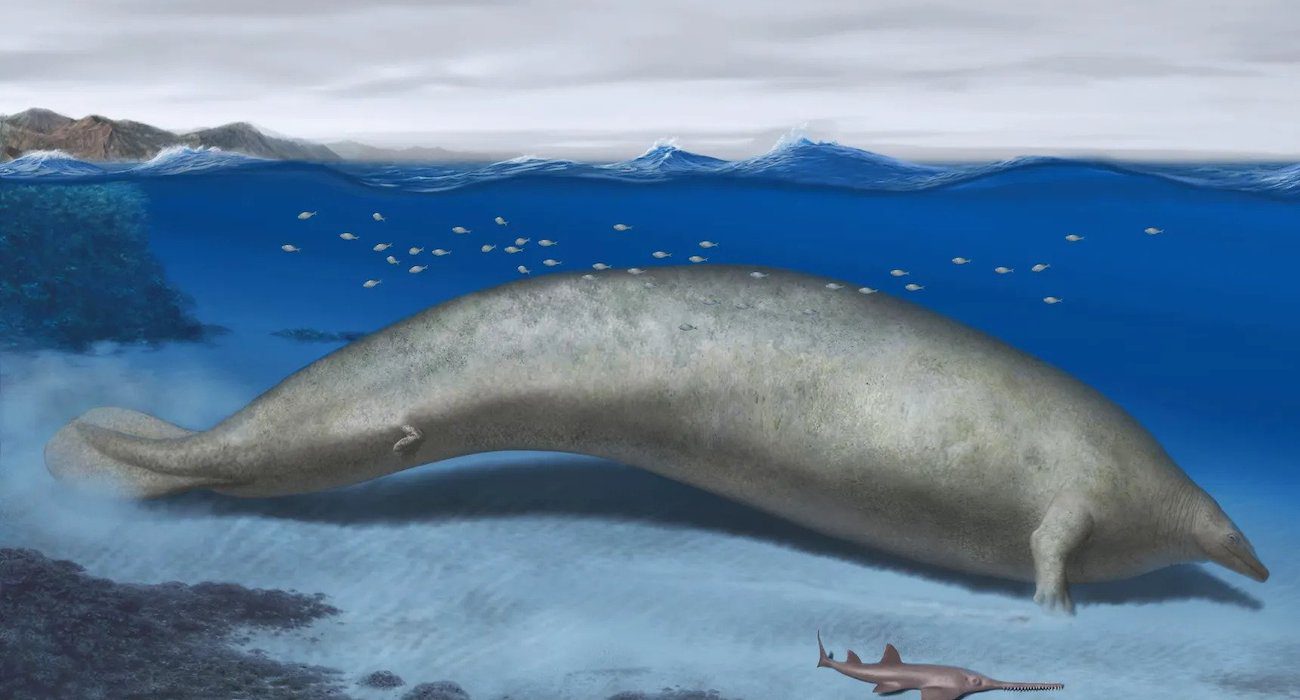Fossilized remains of a massive ancient marine creature found in the Peruvian desert have stirred excitement in the scientific community.
Named the Perucetus colossus, Latin for “the colossal whale from Peru,” experts think the animal — which once swam Earth’s waters 39 million years ago — could be the heaviest on record, WFAA reported.
Estimates from a group of international scientists put the weight of the giant beast as high as 375 tons, according to a paper published in Nature on August 2. It could have been up to three times heavier than the heaviest animal currently inhabiting Earth: the blue whale.
A research team comprising paleontologists from Peru, Italy, Belgium, France, the Netherlands, Germany, and Switzerland reported that the animal’s mass had been inferred by the uncovered remains of 13 vertebrae, four ribs, and a hip bone.
While its body length fell short of the blue whale’s — which can grow as long as 100 feet — its bones were incredibly dense.
For instance, each of P. colossus‘ vertebrae weighed in at over 220 pounds.
As explained by one of the study’s authors, Giovanni Bianucci from the University of Pisa, the skeleton of the P. colossus actually resembles more current-day manatees than whales.
“This kind of thickening and heaviness of the skeleton — named pachyosteosclerosis — which Perucetus shares with [sea cows] is not found in any living [whale, dolphin, or porpoise],” Bianucci told CNN.
As a possibly sirenian-type creature, the research team suggested that the P. colossus might have maintained its massive physique by scavenging for krill and other sea creatures along the seafloor, swaying its body in curvy waves.
While the skull would have helped glean valuable insight into the creature’s diet, it was not among the fossils first uncovered by the Lima, Peru-based field paleontologist Mario Urbina Schmitt over 10 years ago.
“[The excavation] took several years due to the hard rock, the fact that the fossil was inside the core of the mountain, the extreme size of the bones and the hard environmental conditions of the Ica desert,” Schmitt told CNN.
Despite the laborious nature of the study, the consequential insight it gleaned into the current understanding of how whales evolved over time was stressed by those involved.
“The extreme skeletal mass of Perucetus suggests that evolution can generate organisms with characteristics that go beyond our imagination,” Bianucci told CNN.
Earlier in 2023, another discovery shed light on the development of a different aquatic animal: the beaver.
As reported by The Dallas Express, researchers from the University of Texas at Austin found evidence of a new prehistoric beaver species they dubbed Anchitheriomys buceei after the Buc-ee’s iconic mascot.






